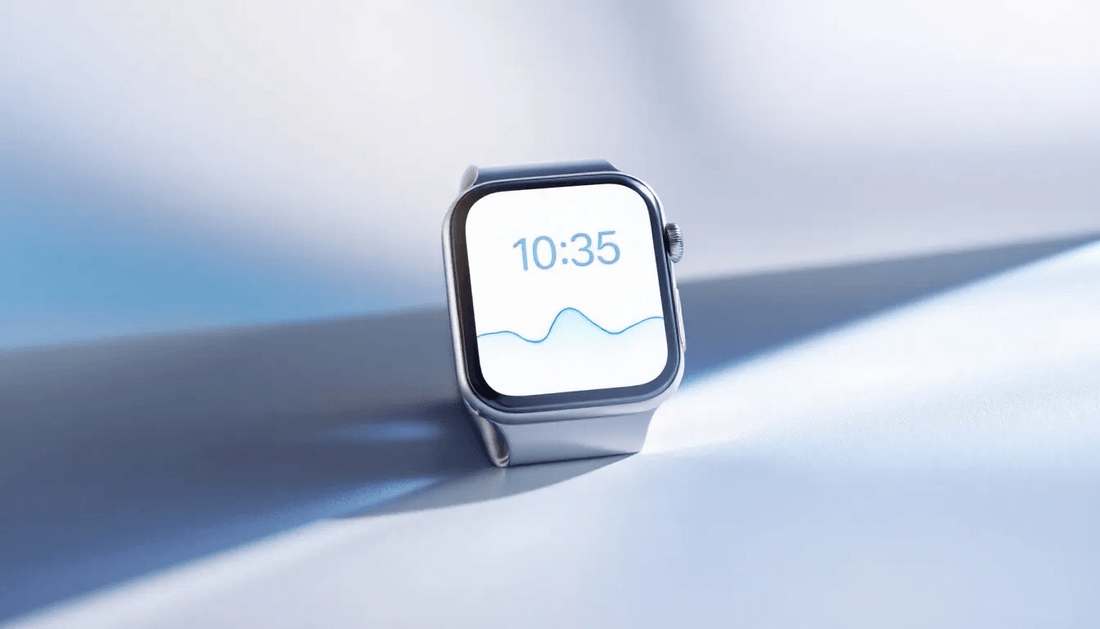When choosing between the Apple Watch 41mm vs 45mm, consider your wrist size, display needs, and budget. This article will help you figure out which model is the right fit for you.
Key Takeaways
-
The 41mm Apple Watch is recommended for smaller wrists, while the 45mm offers a larger display for enhanced usability and visibility.
-
Weight and material options affect comfort; aluminum models are lighter, whereas stainless steel models provide a premium feel but are heavier.
-
Personal preferences, wrist size, and budget play crucial roles in selecting the ideal Apple Watch model for individual needs. Opting for the 41mm model can save money while still offering the same features.
Comparing Apple Watch 41mm and 45mm: Key Differences
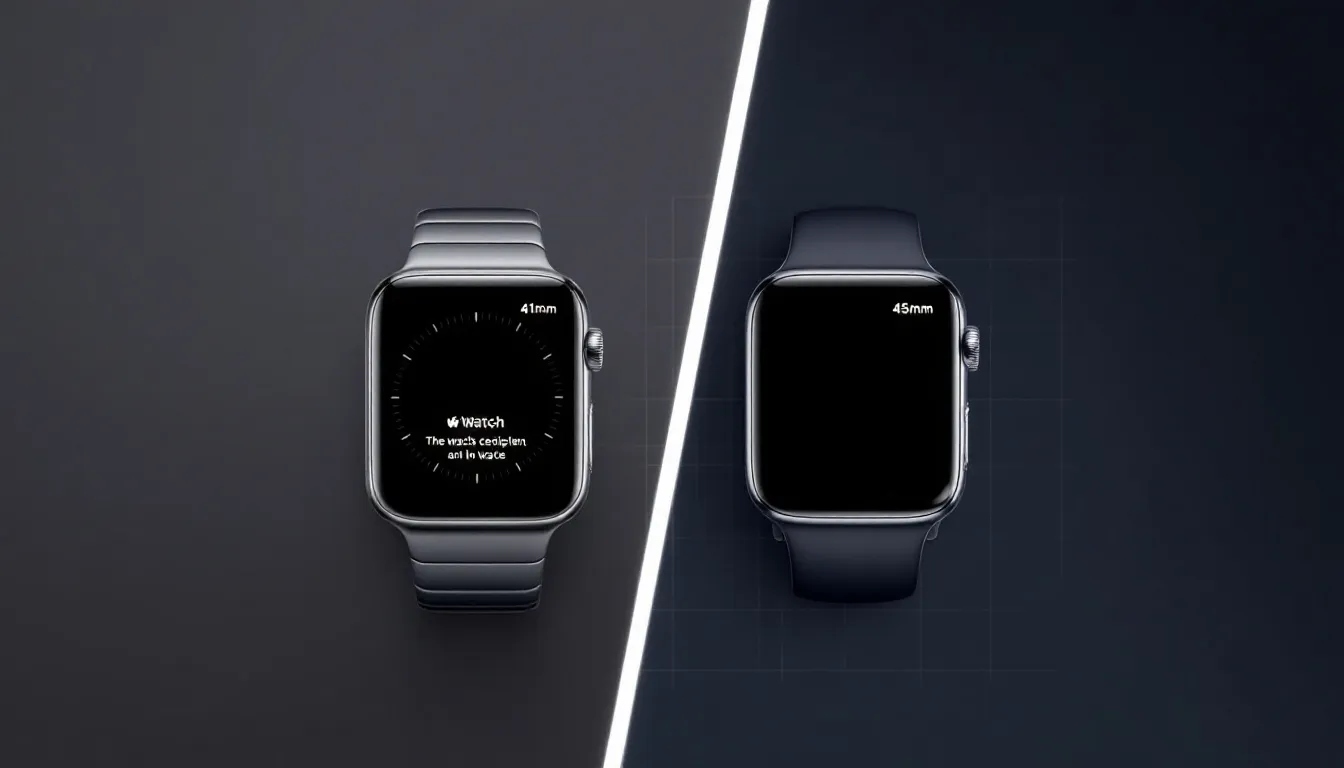
When choosing between the 41mm and 45mm Apple Watch, knowing the fundamental differences is crucial. The Apple Watch Series 9 in these sizes builds on the legacy of previous models with significant enhancements. The 41mm case size is slightly larger than the older Series 6, which was 40mm, making it a bit more modern and sleek.
The 45mm model, on the other hand, offers the largest display available without stepping into the realm of the Ultra models. This size has been a part of the Apple Watch lineup since Series 7, reflecting Apple’s commitment to providing options that cater to varying user needs. The larger case size not only accommodates a bigger screen but also enhances the overall aesthetic appeal for those who prefer a more prominent watch face.
Both models are available in various colors, including silver, which adds to their aesthetic appeal.
Both models feature the latest design enhancements, offering a cutting-edge device irrespective of the size. Upgrading from an older model or buying your first Apple Watch? Knowing these key differences helps in making an informed decision.
Weight and Material Choices
The weight of your Apple Watch greatly affects comfort, particularly for all-day wear. The Apple Watch Series 9 comes in two metal options. You can choose between aluminum and stainless steel. Each metal brings its own set of advantages and weight considerations. The aluminum version of the 41mm model weighs 32.0 grams, while its stainless steel counterpart is 42.3 grams. For the 45mm model, the aluminum version starts at 38.8 grams, with the stainless steel variant weighing 51.5 grams.
The weight difference between aluminum and stainless steel models is noticeable. For instance, the stainless steel 45mm Apple Watch is 9.2 grams heavier than the stainless steel 41mm model. This variation can affect how the watch feels on your wrist throughout the day. Stainless steel models often feel more premium, though they come with added weight.
Consider how you use your watch daily when picking between these metals and sizes. For activities like running or gym workouts, the lighter aluminum model might be more suitable. If you prefer a luxurious feel and don’t mind the extra weight, the stainless steel option could be ideal.
Band Compatibility and Options
One of the Apple Watch’s strongest selling points is its variety of bands. Specific bands are designed to fit the 41mm model perfectly. Additionally, a plethora of third-party bands are available, offering endless customization options to match your style.
One notable mention is the Milanese Loop band, which has undergone design changes to allow for easier size adjustments. This design improvement ensures that you can get the perfect fit without much hassle, enhancing both comfort and style.
Choosing between an official Apple band or a third-party alternative allows for personalizing your watch to suit any occasion. The right band can significantly affect the feel and look of your watch, so explore your options.
Choosing Based on Wrist Size
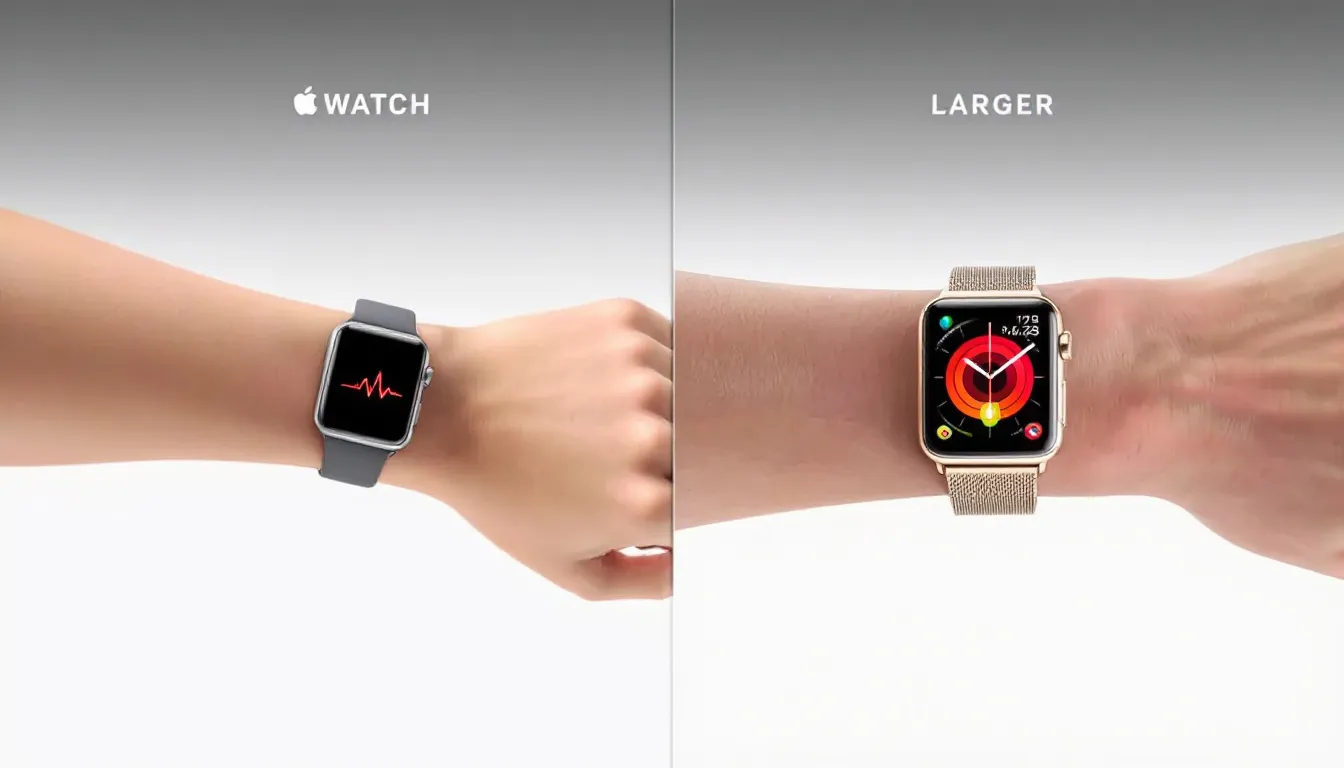
Wrist size is pivotal in determining which Apple Watch model will be more comfortable and aesthetically pleasing. Comfort is crucial, particularly for all-day wear. For those with smaller wrists, the 41mm model is often recommended as it sits more comfortably and doesn’t overwhelm the wrist.
If your wrist measures 155mm (6 inches) or smaller, the 41mm watch is likely a better fit. Individuals with narrower wrists generally prefer smaller watch sizes, ensuring a snug and comfortable fit. Conversely, the 45mm model suits larger wrists, providing a balanced look and feel.
Personal preference ultimately plays a significant role in the decision-making process. Some might prefer the look of a larger watch face, while others prioritize comfort and a less obtrusive design. Try both sizes if possible to see which one feels better on your wrist.
Display and Usability
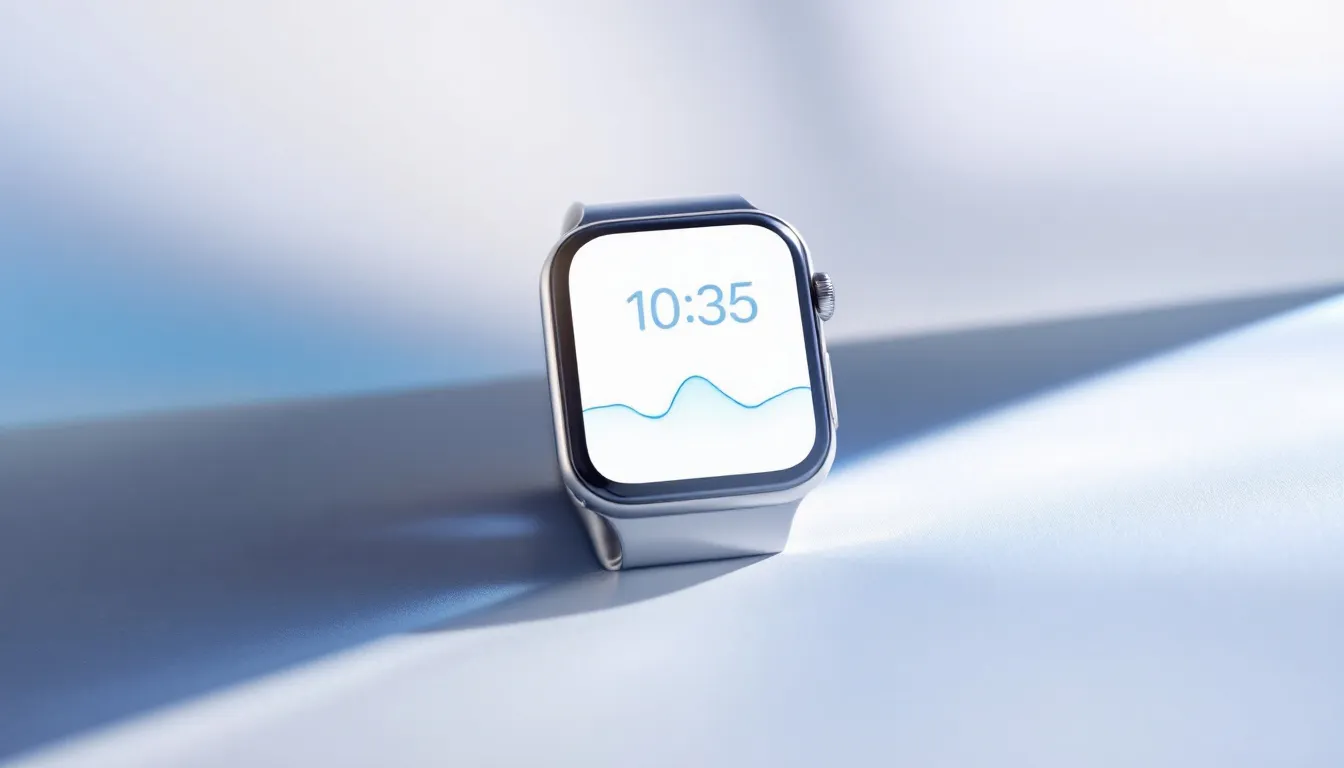
The display is a critical aspect of any smartwatch, and the Apple Watch is no exception. The 45mm model offers the largest screen outside the Ultra models, a favorite for those prioritizing visibility and usability. Advanced display technology keeps the screen readable even in bright conditions, a significant advantage for outdoor use.
A larger screen size means larger touch targets, significantly reducing input errors. This is particularly beneficial for users frequently interacting with their watch, whether for texting, emailing, or navigating apps. More screen real estate allows viewing more content at once, enhancing the overall user experience in applications like Messages or Mail.
Executing touch commands becomes easier with the 45mm model, leading to a more enjoyable and frustration-free experience. If you value a larger, more readable display, the 45mm Apple Watch might be the perfect fit.
Budget Considerations
The price difference between the 41mm and 45mm Apple Watch models typically ranges from $20 to $50, depending on the model and materials used. Stainless steel options are generally more expensive than aluminum, which can influence your decision.
The 41mm watch is generally less expensive and caters to users looking for a more compact design. The minimal price difference means budget might not be a significant constraint for most buyers. Considering seasonal sales and discounts can help you get the best deal on either model.
Balancing budget considerations with your preferences and needs is essential. Even a slight price difference can matter, especially when choosing between aluminum and stainless steel versions.
Which Apple Watch Should You Buy?
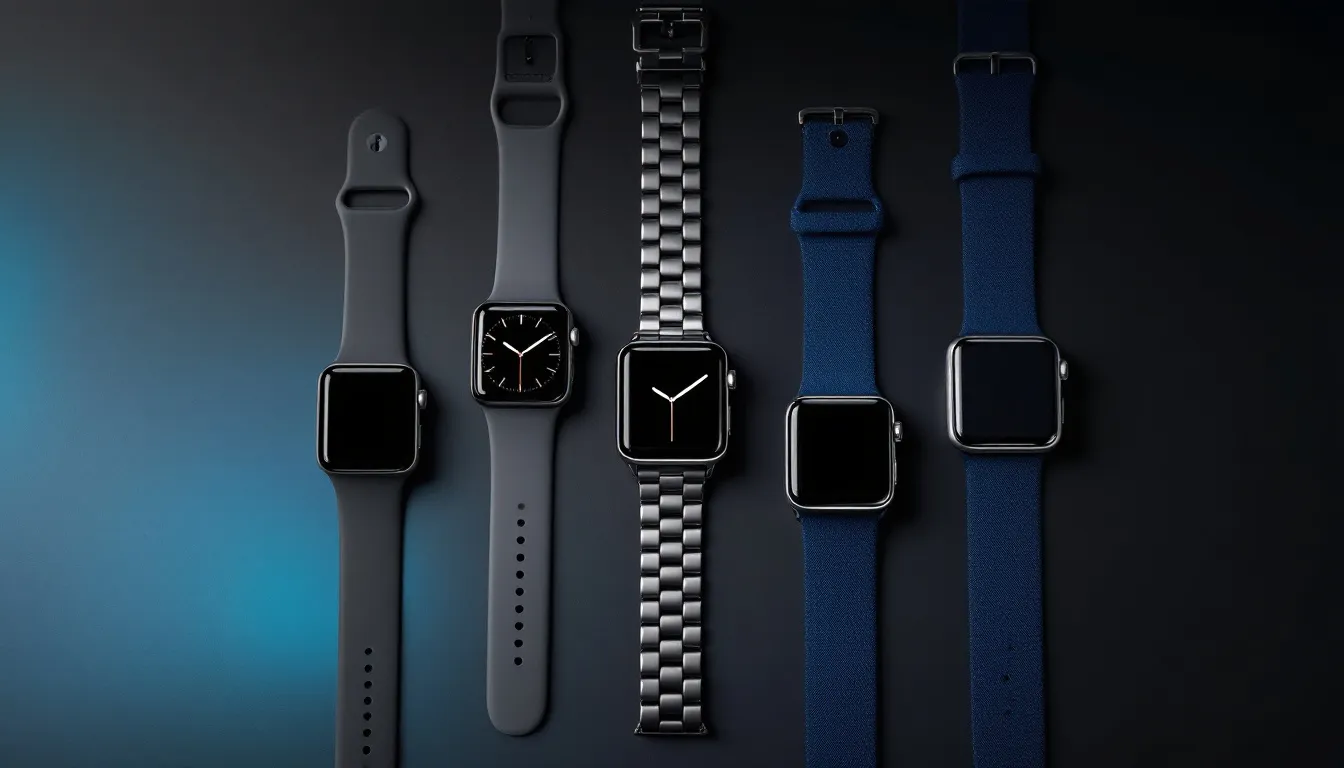
Choosing which Apple Watch to buy ultimately depends on personal preferences, wrist size, and budget. For some, the larger 45mm models may offer additional features that justify the extra cost. Investing in a more expensive model might also enhance its resale value due to better features and demand.
The Apple Watch integrates seamlessly with iOS, enhancing the overall user experience by providing smooth connectivity with your iPhone and other Apple devices.
Consider how you plan to use your Apple Watch. If you need advanced functionalities and a larger display, the 45mm might be better. If you prefer a more compact and lightweight design, the 41mm could be ideal.
Consider both your budget and personal preferences when you decide this matter. Whether it’s your first Apple Watch or an upgrade, weigh the pros and cons of each model to find the perfect match for your lifestyle.
Summary
Summarizing the key points, the choice between the Apple Watch 41mm and 45mm comes down to factors like wrist size, display preferences, material choices, and budget. The 41mm model is more compact and often preferred by those with smaller wrists, while the 45mm offers a larger display and enhanced usability.
Consider your daily activities, personal style, and how you plan to use your watch. By weighing these factors, you can confidently choose the Apple Watch model that best fits your needs and enhances your lifestyle.
Frequently Asked Questions
What are the main differences between the Apple Watch 41mm and 45mm?
The main differences between the Apple Watch 41mm and 45mm are the case size, weight, and display size, with the 45mm featuring a larger display and increased weight, particularly in the stainless steel version.
Which materials are available for the Apple Watch Series 9?
The Apple Watch Series 9 is available in aluminum and stainless steel options.
How do I decide which Apple Watch size is best for me?
To choose the best Apple Watch size for you, assess your wrist size and comfort level; the 41mm suits smaller wrists, while the 45mm is preferable for larger wrists or those wanting a bigger display.
Are there significant price differences between the 41mm and 45mm models?
Yes, there is typically a price difference of $20 to $50 between the 41mm and 45mm models, primarily influenced by the materials used, with stainless steel models being more expensive than aluminum.
Can I use the same bands for both the 41mm and 45mm Apple Watches?
No, the bands are not interchangeable between the 41mm and 45mm Apple Watches. However, there are many third-party options that accommodate both sizes.

